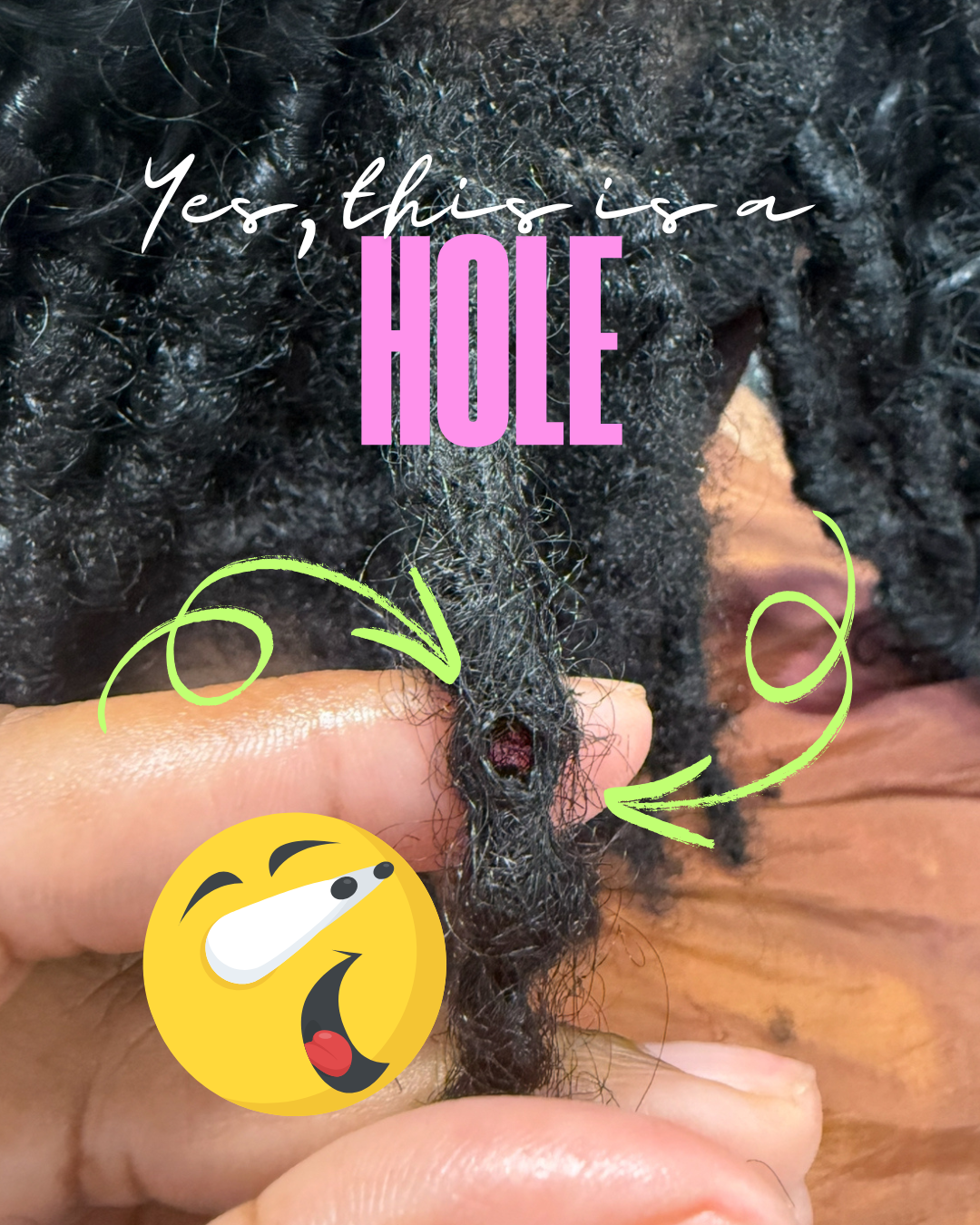
Jul 18 , 2025
Dangers of Soft/Faux Locs Over Real Locs
Putting soft/faux locs on top of your existing locs is not a true protective style. It adds hidden weight, traps moisture & product, and can accelerate thinning, breakage, and scalp issues—especially around your hairline and crown. Choosing lighter, open, or low‑tension styles (or refreshing your own locs) keeps your scalp healthier and your loc journey on track.
Why People Layer Soft / Faux Locs Over Mature Locs
| Perceived Benefit | Reality Check |
| “It’s protective—my hair is tucked away.” | Your real locs are already a protective style; adding faux hair increases manipulation & stress. |
| “It adds fullness/length instantly.” | Temporary volume comes with added weight that can thin roots & edges. |
| “I can go longer without maintenance.” | Neglecting regular cleansing & retightening can cause buildup and weak points. |
| “It hides frizz or budding.” | Frizz is a normal maturation phase; covering it can lead to over-tightening later to ‘catch up.’ |
8 Major Risks You Should Know
-
Excess Weight & Traction: Added synthetic strands double (sometimes triple) the weight on each root, increasing risk of traction alopecia at edges, nape, and crown.
-
Root Strangulation: Wrapping or crocheting around an already formed loc can constrict blood flow to the follicle and create weak, thinned “choke points.”
-
Moisture Trapping & Mildew (“Loc Funk”): Faux hair holds water longer. If not fully dried, the dark, oxygen‑poor core becomes a breeding ground for odor‑causing microbes.
-
Product & Lint Buildup: You’re likely to add mousse, gels, or oils to blend textures. Trapped under the faux covering, they oxidize and harden—difficult to remove later.
-
Hidden Breakage: The process of installing soft locs often include crocheting the syntheic hair THROUGH your actual loc as an anchor. It can leave holes in the loc that may not ever be able to be repaired. Damage can occur underneath without you noticing until uninstall—revealing thinning or mid‑shaft weak spots.
-
Slippage & Irregular Budding (For Younger Locs): Early-stage (starter to 12 months) locs may unravel, flatten, or develop weak, thin sections under prolonged compression.
-
Scalp Stress & Inflammation: Reduced airflow + tension + residue can trigger itch, dandruff flare‑ups, or folliculitis.
-
Longer Wash & Dry Times (So You Wash Less): Extra drying time causes many to extend wash intervals, compounding buildup and odor.
Who Is at Highest Risk?
-
Clients with fine or low-density hair at the hairline or crown.
-
Those with scalp conditions (seborrheic dermatitis, psoriasis, folliculitis).
-
People in humid climates or with active lifestyles (sweat increases moisture load).
-
Individuals in the early loc formation stage (0–18 months) where structure is still developing.
Safer Alternatives That Preserve Your Loc Health
| Goal | Better Option | Why |
| Add fullness for an event | Temporary clip-in afro or kinky bulk hair pieces attached to a few large sections | Easy on/off, minimal root stress |
| Hide frizz/budding | Light palm rolling or interlocking maintenance + hydrating mist | Enhances appearance while supporting maturation |
| Color change | Semi-permanent tint or colored wraps on a few accent locs | Less bulk, targeted expression |
| Length experiment | Try a wig or crochet cap over cornrow base (not over locs) | Gives scalp a rest; remove nightly |
| Style variety | Barell rolls, pipe cleaner curls, bantu-knot sets on your own locs | Zero added weight |
FAQs
Isn’t adding faux locs just like combining locs?
No. Combining merges your hair strands; faux wrapping adds foreign weight and constriction.
Can I do it if my locs are very thick and healthy?
You can, but cumulative weight still accelerates fatigue over time. Reserve for a rare occasion.
Will a professional installation make it safe?
Skill reduces some risks (like tension) but cannot remove weight, moisture trapping, or hidden buildup.
How do I know if my roots are thinning?
Look for widening parts, see-through areas near temples, or a fuzzy halo where strong cylindrical bases used to be.
Key Takeaway
Your natural locs are already a protective, expressive style. Prioritize enhancing their health and beauty instead of concealing them under heavy, moisture-trapping layers. Healthy locs = longevity, density, and confidence.
